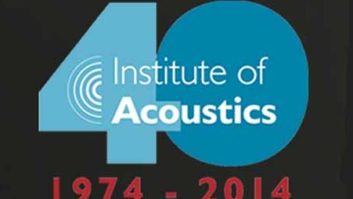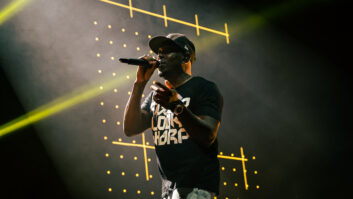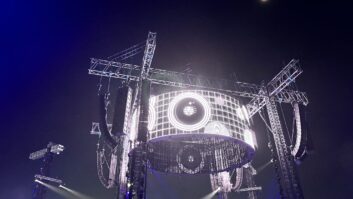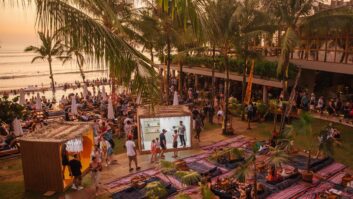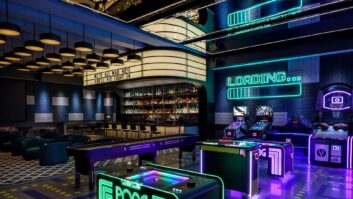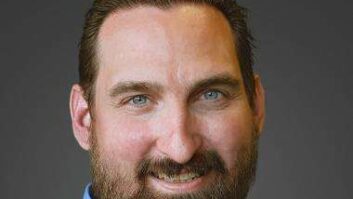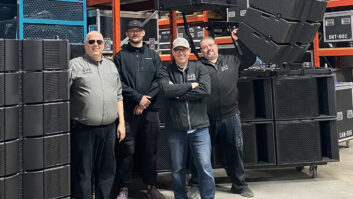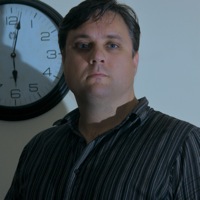
Now in its 27th year, Reproduced Sound from the Institute of Acoustics (IoA) is positioned somewhere between an academic conference and an audio solutions showcase. Prioritising the easy exchange of ideas about theory and practice, the event continues to draw an international audience to its periodically shifting UK location.
Event chair of Reproduced Sound for the past two years is Paul Malpas, whose two-decade career in acoustics began with a position at Arup in 1990. He remained with the globally renowned acoustics specialist until 2007, when he joined Richard Northwood at Consultancy on Media Systems. After a period as an associate director of the re-established acoustics team at Capita Symonds in 2009, he decided to venture out on his own and form Engineered Acoustic Designs.
Overseeing the Reproduced Sound programme, says Malpas, makes it possible to “stay in touch with what is happening across the industry and have the opportunity to meet leading experts in a variety of different areas. It’s also a constant reminder of how much there is still to learn.”
Subtitled ‘Engineering or Art?’, the 2011 event took place at the Thistle Hotel, Brighton, from 16-18 November. Notable among a typically diverse schedule was the inaugural UK demonstration of Meyer Sound’s much-discussed electro-acoustic architecture, Constellation. It was this session that provided the starting point for IE’s interview with Malpas.
Many of our readers will have experienced Constellation in a trade show environment. In what ways was it beneficial to organise the more concentrated kind of demo witnessed at Reproduced Sound?It’s one thing to host a system showcase on a tradeshow floor and impress people; it’s quite another to put it in a quiet space and have people apply a more critical eye. In the case of Reproduced Sound, I think it was very valuable to experience the system in a room that was physically a bit shorter than was ideal. Our audience of consultants and specifiers always find it useful to be able to see where the limitations of any given system might reside, rather than to simply see it in the best possible light. I am really glad that John Pellowe [Constellation project director] and the rest of the team at Meyer Sound were able to see the value of this sort of setting.
Audio and its role in ensuring audience safety was a recurring theme of the Applications and Engineered Sound strand. What were the primary conclusions drawn by Electro-Voice’s Oliver Sahm and Protec’s Jim Gilroy in their presentations?Oliver’s session (‘Sound reinforcement systems in stadiums: a comprehensive task for safety, operation and acoustics’) addressed the very tight balancing act relating to the achievement of speech intelligibility in large spaces that require highly specialised configurations. The specification of voice alarm capability was a theme continued in Jim’s subsequent presentation (‘When entertainment meets life safety’).
The maturity of the UK and world audio businesses in the value and implications of achieving speech intelligibility requirements has been in no small part down to my predecessors during the 27 years of Reproduced Sound. Added to this now are tough requirements being applied via EN54 on the robustness of Voice Alarm products, as compared directly with their Fire Alarm counterparts. As in all that we talk about at Reproduced Sound, collaborative design is the key to guarding against undue compromise around the design team table. Non-technical issues pertaining to the day-to-day life of the consultant also received an airing – hence Marshall Day Acoustics’ Larry Elliott and Daryl Prasad discussing the ‘need for diplomacy in acoustical consulting’…Larry came over from New Zealand for this session, and it was fantastic to have him here. With Daryl, he highlighted those instances in which it is not too difficult to envisage a suitable solution, but where that might differ from the idea the client or the design team had in mind. Drawing on specific examples, they explored the ways in which the customer can gradually be drawn towards the best possible solution. Rather than try to answer the question they have asked, you need to help them recognise and understand the question they should have asked. It’s always a form of negotiation: you have to be sensitive to the client’s side and what they want, as well as highlighting what you believe to be in their best interests over the long run.
Are there any other sessions that you would pinpoint as having been especially revealing?Peregrine Andrews from Moving Air gave a fascinating presentation about the sound of sports broadcasts, and in particular those elements which are sometimes flown in for reasons of practicality or to enhance the overall experience. For example, the difficulties of capturing cross-country skiing mean that sound teams might have to rely on a stock recording of the skis’ ‘swishing’ noise. This might seem to be a false application, but is it any more ridiculous than putting a mic inside a ball or capturing the inner creaking of the beam in gymnastics? Nobody would be able to hear that without the use of specialised mic’ing techniques and technologies. The message seemed to be, if it adds to the experience and the drama of the sport, it has a place.
From Prolight + Sound to AES, there are plenty of conference events which examine acoustical issues. What are the factors that make Reproduced Sound unique?It’s really a combination of elements. Firstly, the residential aspect; we’re all here on-site in the one hotel and that is conducive to a more collaborative atmosphere. I always say that the after-hours discussions that go on long into the night can be as important as the presentations themselves. Secondly, there is the size of the event; attendance ranges from 80 to 130, and that is a nice, manageable number. Thirdly, it’s a very inclusive conference that attracts a diverse audience of people, all of whom seem to be open to sharing and discussing ideas in a positive context. I first came to Reproduced Sound when I was still fresh out of Salford, nearly 20 years ago, and I learned a lot from the sessions in my early career. I still find it useful two decades later, and I’m sure that’s the same for a lot of other delegates. It’s rare to encounter an event that blends an academic level of detail with – for want of a better term – ‘real world’ considerations, and I think that’s what we have achieved here with Reproduced Sound. Next year’s edition of Reproduced Sound will take place from 14-16 November – once again at Brighton’s Thistle Hotel. www.ioa.org.ukwww.reproducedsound.co.uk
